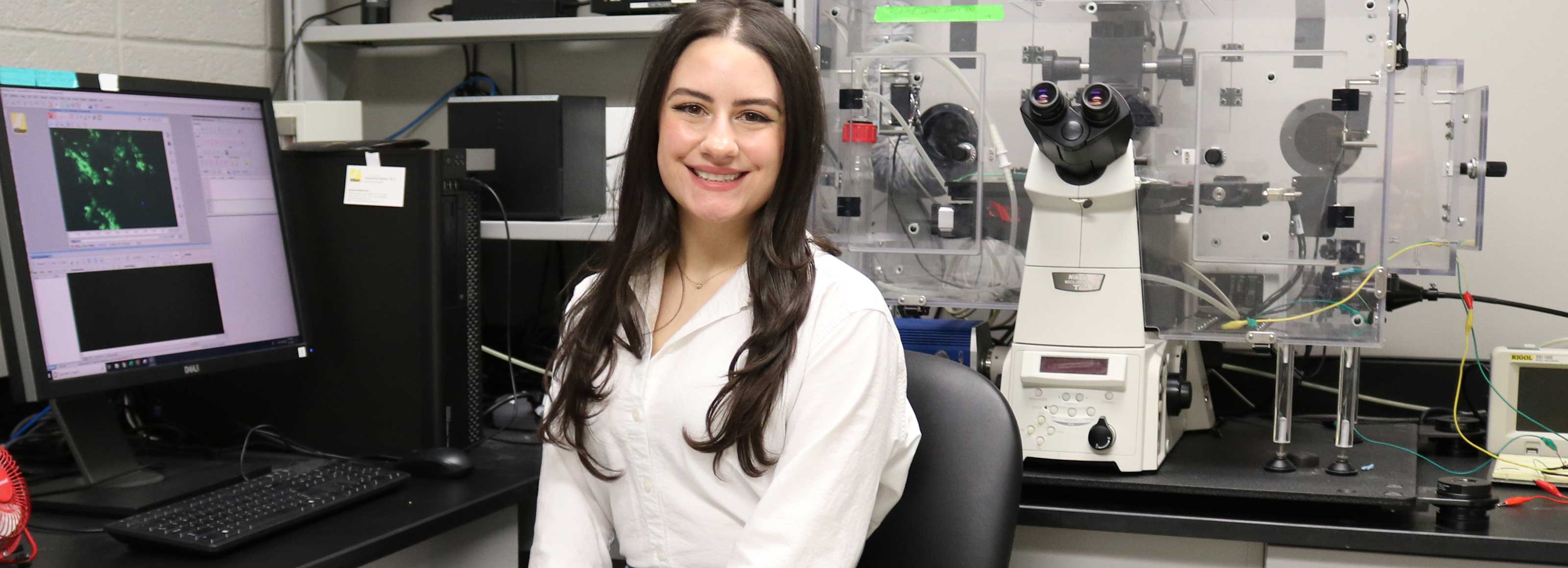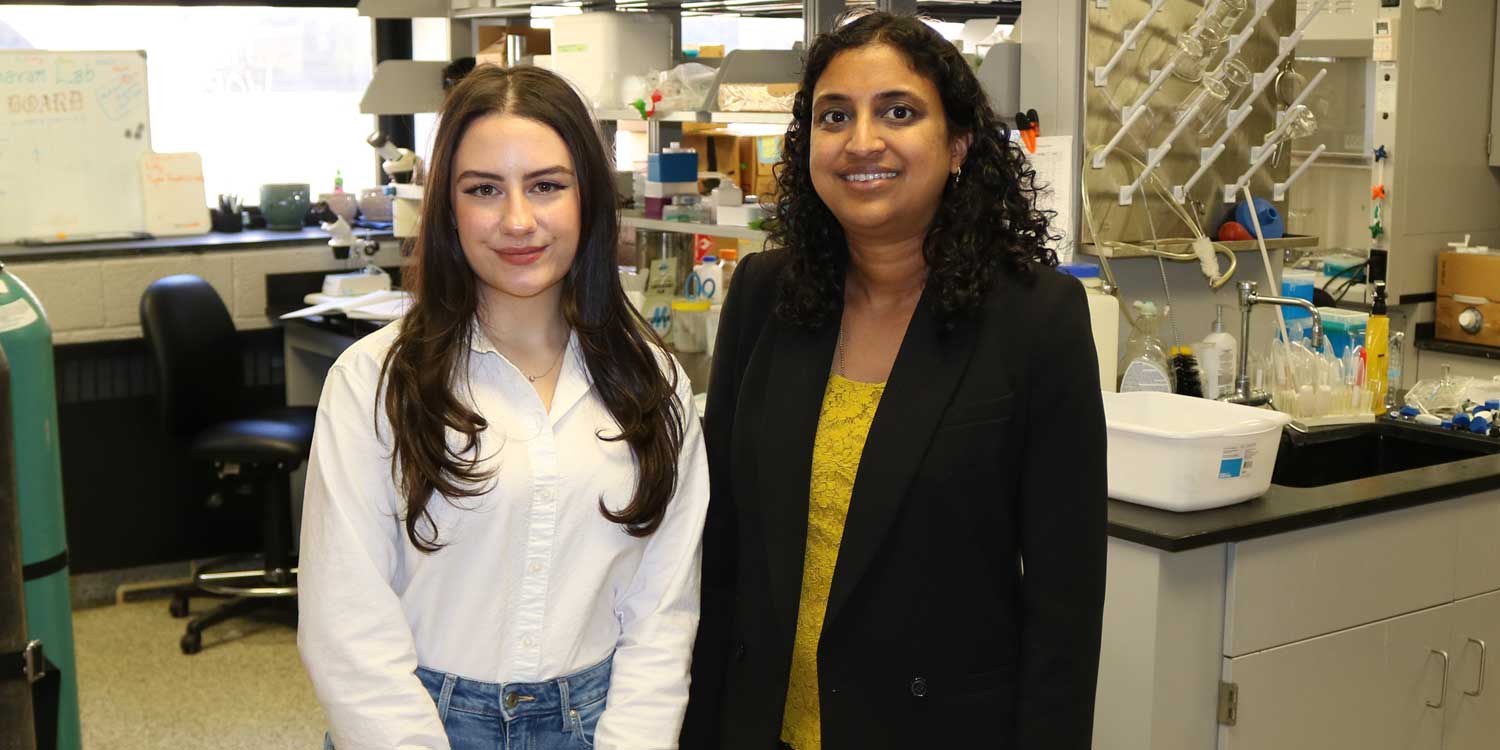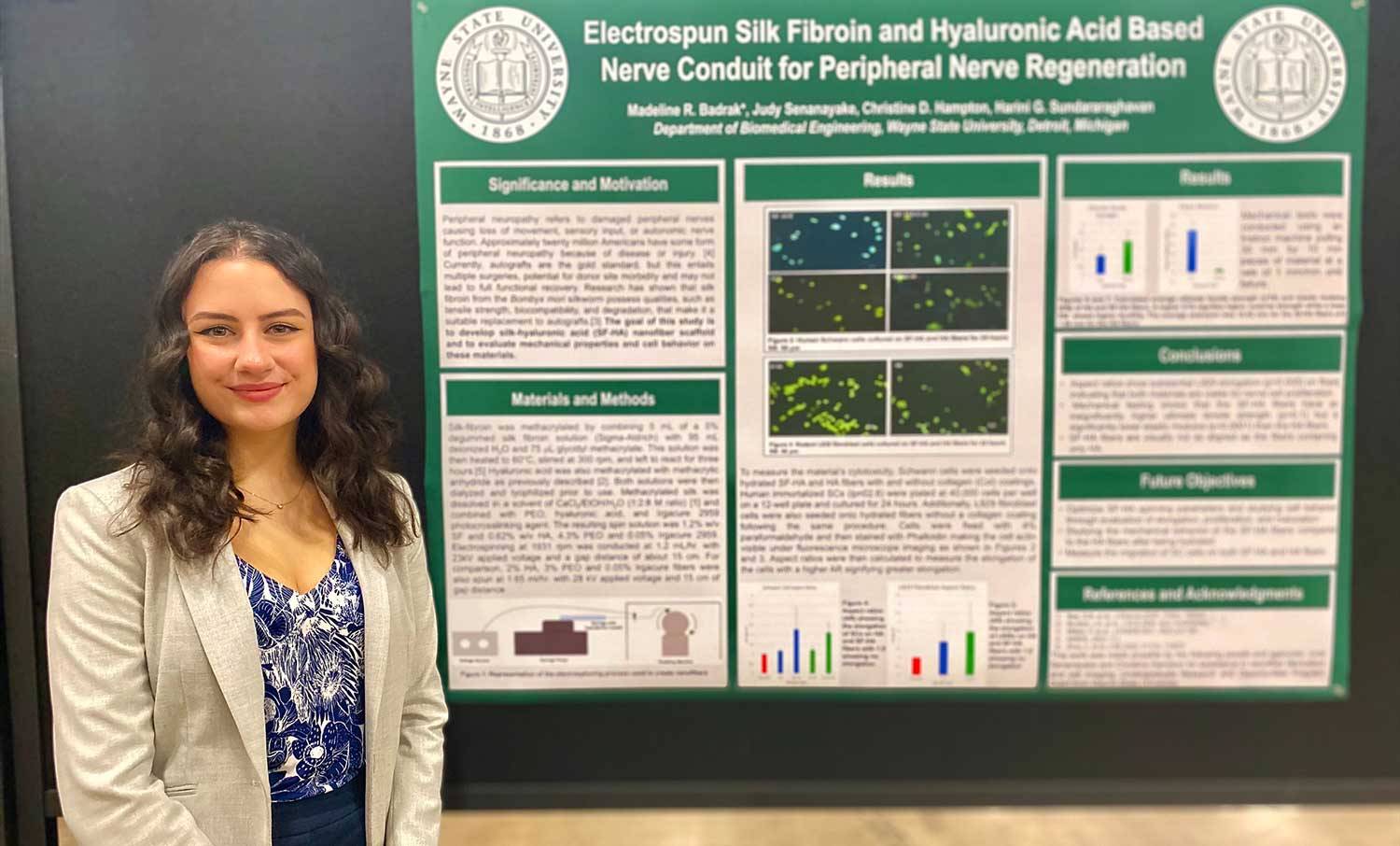BME grad turns family inspiration and scientific passion into academic excellence and award-winning biomedical research

Madeline Badrak spent much of her childhood in and out of hospitals. Her younger brother was born without functional kidneys. She watched him go through dialysis many times and was there when he received not one, but two, kidney transplants.
Perhaps before she even realized it, Badrak had an engineer’s mindset — a problem-solver with a passion for science and hands-on learning. After seeing firsthand how physicians perform their work and hospitals function, she wondered if there was a way to improve the care patients and families receive. The seeds were planted for her to pursue a career in biomedical engineering (BME).
“I knew that I wanted to go into BME right out of the gate,” said Badrak. “And Wayne State’s program was the best fit for me.”

Badrak was the first member of her family to go to college, and she had to work hard to get there. She kept her high school job at a local ice cream shop during her first two years at Wayne State to cover her tuition. Meanwhile, she pushed through the BME curriculum, landed on the dean’s list every semester and, when the experiential learning opportunities came along— which, for Badrak, set Wayne State apart from the rest — she seized them.
“As a sophomore, while my brother was on dialysis, I worked alongside physicians at Children’s Hospital to develop a more comfortable dialysis port for him that also decreased his risk of infection,” she said.
But it was in the BME design lab, under the direction of Brian Mundo, that she started working on a project that became the cornerstone of her academic career. Badrak began developing a silk-based biomaterial to regrow nerve cells in patients with peripheral neuropathy.
“When people have nerve injuries and lose movement or sensory processing, the body can’t fix it on its own,” said Badrak. “You have to bridge the gap with material that encourages the cells to grow and reconnect, allowing a person to move again.”
Badrak continued to advance her research project over the next two years alongside her advisor Harini Sundararaghavan, an associate professor in the Department of Biomedical Engineering.
“Madeline has been one of my top undergraduates due to her commitment, dedication and enthusiasm for lab work,” said Sundararaghavan. “Within a year of joining the lab, Madeline formulated a novel research idea, presented in a lab meeting of Ph.D. students and was able to write a successful UROP application.”
As her work has progressed, Badrak has presented to peers and industry leaders on campus, often with her family in attendance, which she says offers tremendous encouragement. Badrak also attended the Biomedical Engineering Society annual meeting last October in San Antonio, where she impressed experts in attendance and took in valuable feedback.
“Getting involved in BME and seeing people researching tissue regeneration and trying to find ways to use a person’s own body to heal themselves — and now having the privilege of doing this type of work myself — has been amazing,” said Badrak, who is in the process of preparing her findings for journal publication.

Wanting to be more connected professionally to the medical field, she turned in her ice cream scooper after her sophomore year and began working as an X-ray technician at a nearby chiropractic office. Using imaging techniques and performing physical exams, she’s become more familiar with spinal anatomy and enjoys direct interaction with patients.
“It’s an advantage to be able to get honest feedback from people regarding ailments and devices to know what works for some and what doesn’t for others,” said Badrak.
While she will receive her bachelor’s at the May 2023 commencement, her time at Wayne State is not over. Through the AGRADE program, Badrak is nearly halfway done with her M.S. and will leverage her research project to develop her thesis as her work in Sundararaghavan’s lab carries on.
“Madeline is a true leader,” said Sundararaghavan. “She has started mentoring newer undergraduate students, and we are excited to have her continue in the lab as a master's student.”
Looking ahead, Badrak will spend this summer laying the groundwork for her post-grad career. She hopes to work alongside physicians and patients to develop new medical devices and treatments.
“I’m very excited to see where I end up,” she said.